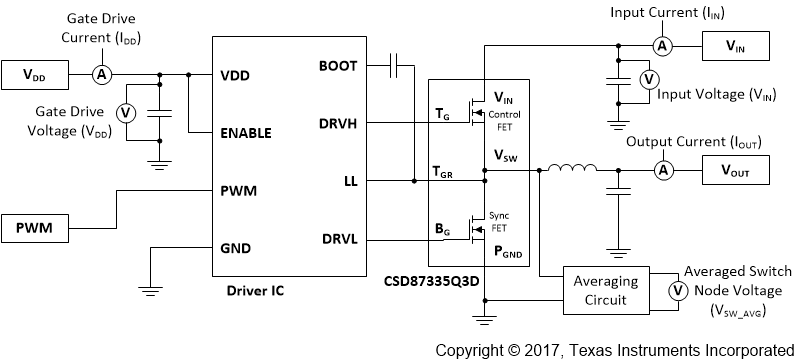ZHCSEO0B February 2016 – April 2018 CSD87335Q3D
PRODUCTION DATA.
6.4 Normalized Curves
The normalized curves in the CSD87335Q3D data sheet provides guidance on the power loss and SOA adjustments based on their application specific needs. These curves show how the power loss and SOA boundaries will adjust for a given set of systems conditions. The primary Y-axis is the normalized change in power loss and the secondary Y-axis is the change in system temperature required in order to comply with the SOA curve. The change in power loss is a multiplier for the power loss curve and the change in temperature is subtracted from the SOA curve.
 Figure 31. Typical Application
Figure 31. Typical Application